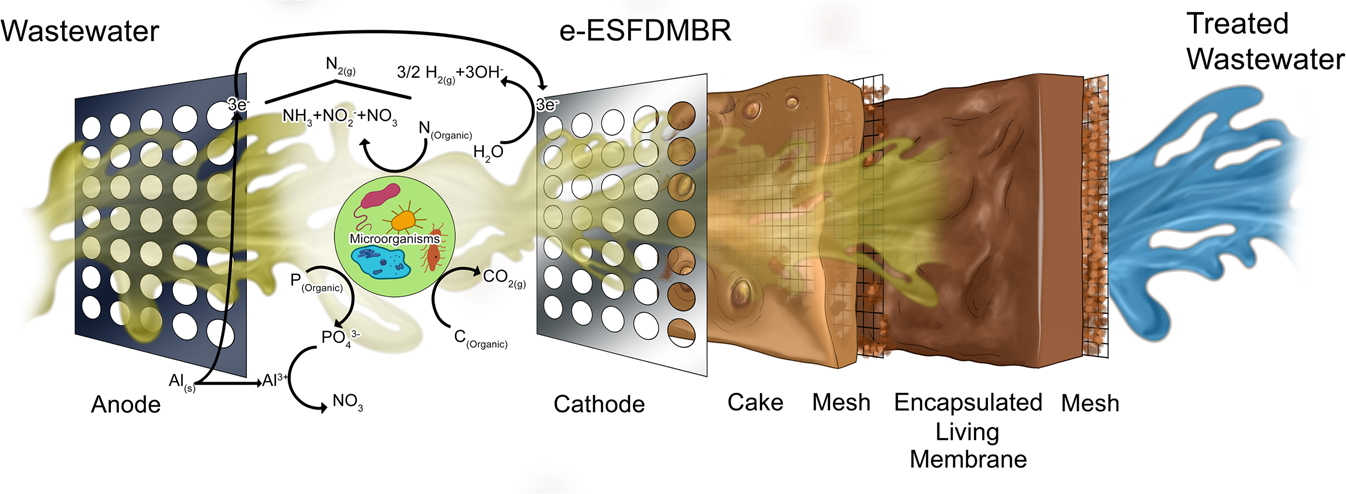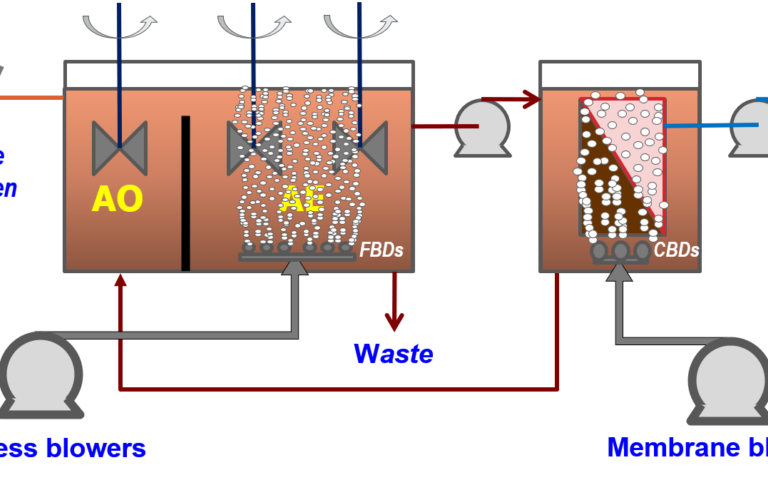Why Membrane Bioreactor Solutions Are Ideal for Sustainable Water Treatment
Why Membrane Bioreactor Solutions Are Ideal for Sustainable Water Treatment
Blog Article
Membrane Layer Bioreactors Clarified: Reliable Solutions for Tidy Water
Membrane bioreactors (MBRs) have actually become an advanced service for attending to journalism obstacles of wastewater treatment. By incorporating organic processes with innovative membrane purification, MBRs not just improve the top quality of treated water yet likewise lower the spatial demands of treatment centers. As ecological concerns escalate, the function of MBR innovation in promoting lasting water monitoring ends up being significantly substantial. The intricacies of their procedure, benefits, and prospective applications merit a closer examination to totally recognize their effect on the future of water therapy.

What Are Membrane Bioreactors?
Membrane bioreactors (MBRs) are innovative wastewater treatment systems that combine organic deterioration processes with membrane layer filtration technology. This assimilation allows for the reliable elimination of impurities from water, making MBRs a preferred option in various applications, including metropolitan wastewater treatment and industrial effluent monitoring.

Among the crucial benefits of MBRs is their ability to produce premium effluent, commonly ideal for reuse in watering or industrial processes. Furthermore, MBRs need a smaller sized impact compared to conventional treatment systems, making them suitable for metropolitan settings where space may be restricted.
Moreover, MBRs can efficiently manage varying influent loads and are less at risk to the results of hazardous shocks. These qualities contribute to their expanding popularity as a lasting remedy for addressing the increasing need for tidy water while reducing ecological effects.
How Membrane Bioreactors Work
While the procedure of membrane bioreactors (MBRs) might seem facility, it essentially revolves around the harmony in between organic processes and membrane layer filtration. MBRs incorporate a biological therapy process, typically activated sludge, with a membrane separation unit to treat wastewater effectively.
In an MBR system, wastewater is very first presented into a bioreactor where microorganisms break down raw material and other pollutants. The organic activity reduces the focus of contaminants while advertising the development of biomass. Following this biological therapy, the combined alcohol undergoes membrane layer filtering, which can be microfiltration or ultrafiltration, relying on the wanted effluent top quality.
The membranes serve as a physical obstacle, allowing water and small solutes to pass while maintaining put on hold solids and larger molecules. This allows the system to keep a high concentration of biomass within the reactor, improving the therapy effectiveness.
Furthermore, the continuous splitting up of treated water from the biomass assists in a compact layout and decreases the impact of the therapy center. In general, the mix of biological deterioration and membrane layer purification in MBRs leads to trustworthy and efficient wastewater therapy, guaranteeing premium effluent suitable for various applications.
Advantages of MBR Innovation
One of the crucial advantages of membrane bioreactor (MBR) modern technology is its ability to produce high-grade effluent with a substantially reduced footprint compared to standard wastewater treatment approaches. MBR systems properly incorporate biological treatment and membrane filtration, resulting in exceptional removal of pollutants, consisting of put on hold solids, pathogens, and raw material. This ability causes effluent that commonly meets or exceeds strict regulatory criteria his explanation for reuse and discharge.
Additionally, MBR modern technology enables higher biomass focus, which enhances the therapy effectiveness and lowers the needed activator quantity. This compact style is particularly helpful in city locations where room is restricted. The operational versatility of MBR systems likewise suggests they can adapt to differing influent high qualities and flow prices, making them appropriate for a broad range of applications.
Moreover, the decreased sludge manufacturing related to MBR processes adds to reduce functional and maintenance costs. The membrane layers act as a physical barrier, lessening the threat of blocking and enabling longer functional durations in between cleansing. Overall, the benefits of MBR modern technology make it an eye-catching option for lasting wastewater treatment, resolving both environmental worries and the requirement for reliable source management.
Applications of Membrane Layer Bioreactors
With their flexibility and performance, membrane layer bioreactors (MBRs) discover applications throughout different fields, including metropolitan wastewater treatment, commercial processes, and even water reclamation. In municipal settings, MBRs offer a compact option for treating wastewater, effectively removing pollutants while concurrently generating top quality effluent that meets strict regulatory requirements. This makes them especially suitable for locations with minimal area.
In industrial applications, MBR innovation is utilized for treating process water, particularly in industries such as food and drink, pharmaceuticals, and petrochemicals. These markets gain from MBRs' capability to manage high organic loads and their effectiveness in recovering useful sources from wastewater, such as nutrients and water.
In addition, MBRs play an essential role in water reclamation initiatives, enabling the reuse of dealt with wastewater for watering, commercial procedures, or perhaps as safe and clean water after more treatment (Membrane Bioreactor). Their performance in removing virus and toxins makes them a reputable choice for making sure water quality in read the full info here numerous reuse applications
Future of Water Treatment Solutions
The future of water treatment remedies is positioned for transformative innovations driven by technological innovation and enhancing environmental understanding. As worldwide water scarcity comes to be a pushing problem, new techniques, consisting of membrane bioreactor (MBR) systems, are readied to play an essential function in boosting the effectiveness and sustainability of water treatment processes.
Arising technologies such as expert system and artificial intelligence are expected to enhance treatment operations, allowing for real-time monitoring and predictive upkeep. This will certainly improve the general reliability and efficiency of water treatment facilities. Improvements in membrane layer materials, such as graphene and nanofiltration, guarantee to raise permeation prices and minimize fouling, leading to lower power usage and functional costs.
In addition, the combination of renewable resource sources right into water treatment plants will add to greener techniques. The round economic situation version will certainly also gain grip, encouraging the recovery of important sources from wastewater, such as nutrients and energy.
Final Thought

Membrane layer bioreactors (MBRs) have emerged as an advanced remedy for resolving the pressing obstacles of wastewater therapy. By integrating organic processes with innovative membrane layer filtering, MBRs not just enhance the quality of cured water yet likewise reduce the spatial demands of treatment facilities.One of the essential advantages of membrane layer bioreactor (MBR) technology is its capability to generate premium effluent with a significantly minimized footprint compared to traditional wastewater treatment methods.With their flexibility and efficiency, membrane layer bioreactors (MBRs) locate applications across numerous sectors, consisting of municipal wastewater look at this web-site treatment, industrial processes, and also water reclamation.In verdict, membrane bioreactors stand for a significant innovation in wastewater treatment modern technology, integrating biological procedures with efficient membrane purification to produce top quality effluent.
Report this page